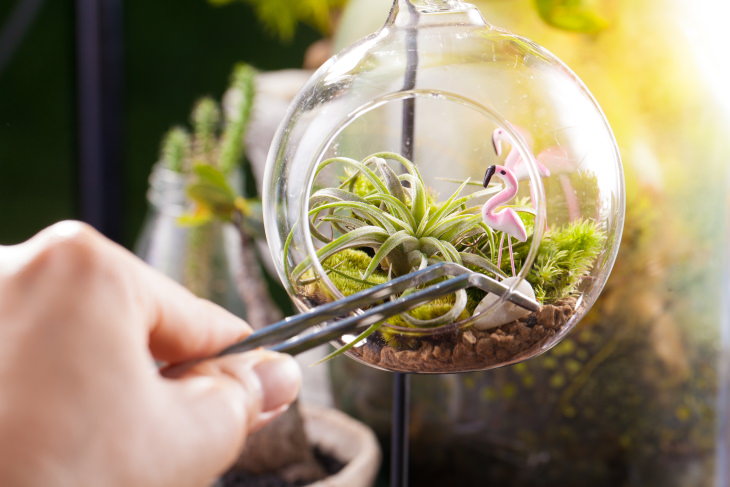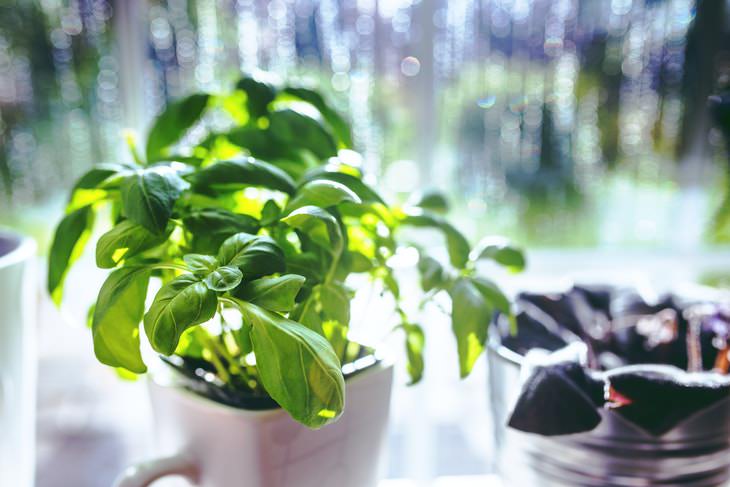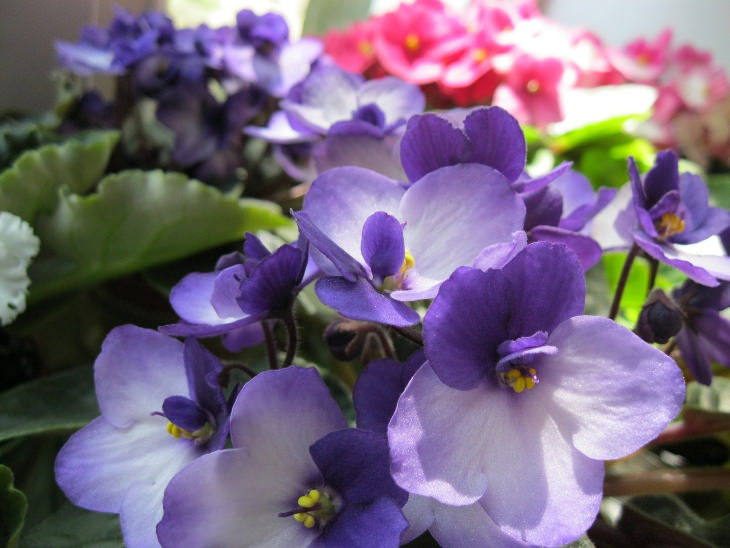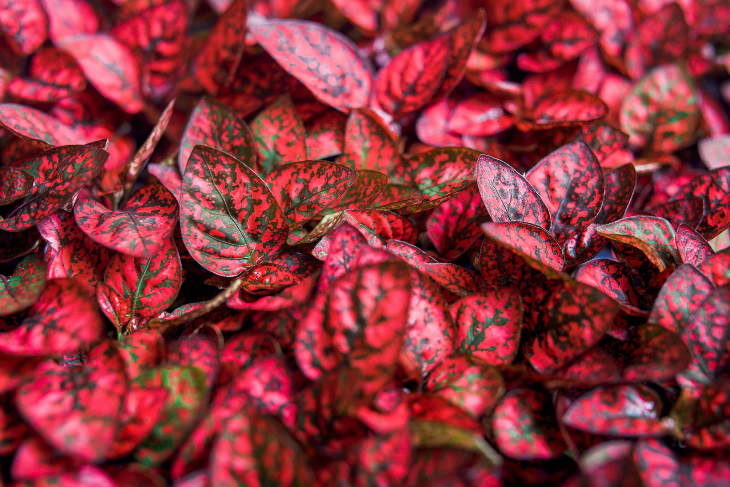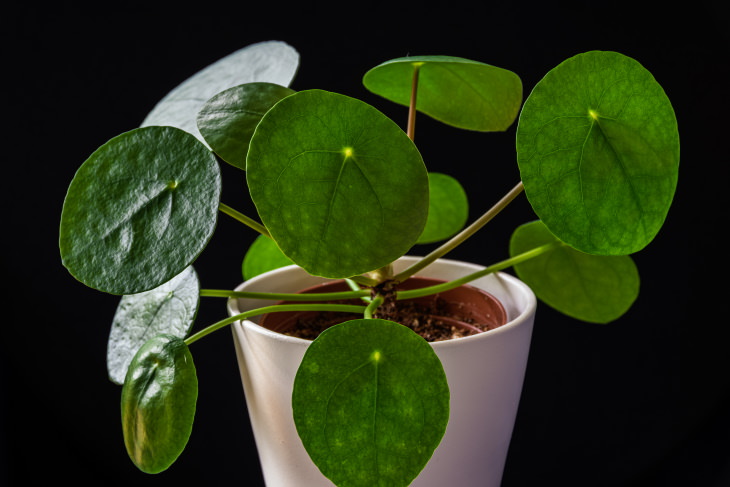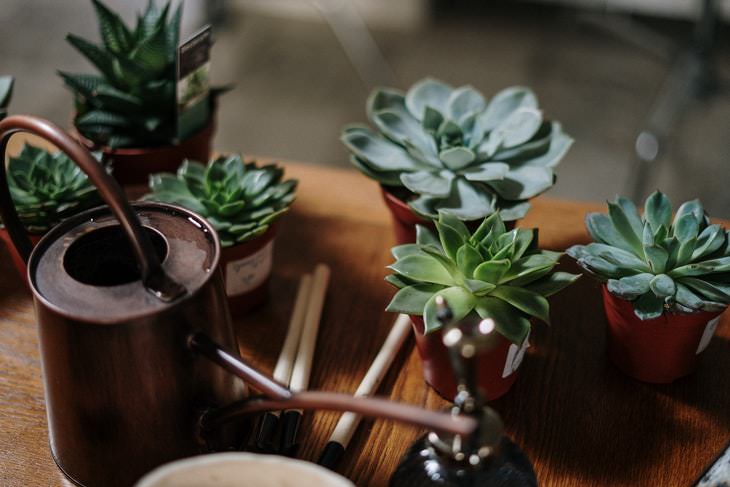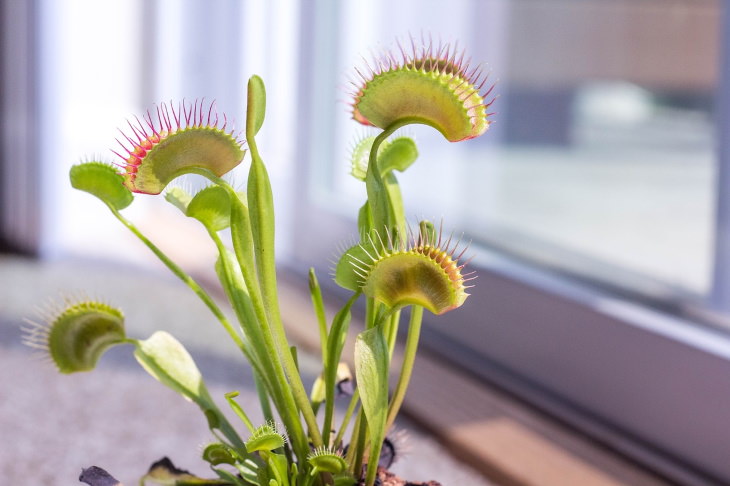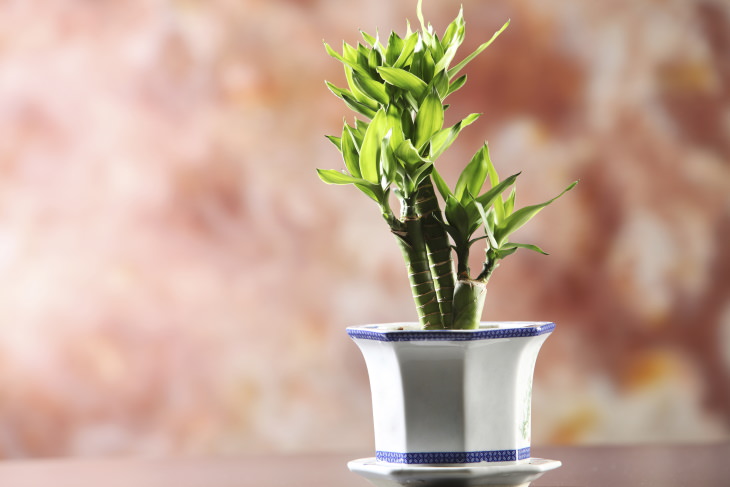1. Air Plants (Tillandsia)
Let’s hit this list off with a group of pretty unique plants - air plants. They’re called that way because unlike the vast majority of plants, they do not require any soil and get all the nutrients they need from the air through their leaves. This is great news to those who can’t afford to place a big and heavy pot on the floor or have plants take up precious shelf space.
The possibilities are endless with these sturdy plants - just pop them into a shallow decorative dish and showcase them on a table, place them carefully into a glass terrarium hanging on the ceiling, or attach them on the sides of an empty picture frame and hang it on the wall.
Air plants come in many different colors, too, ranging from green to bluish-green, white, or even reddish-green. Keeping these plants alive and healthy is pretty simple, too, just soak them in water for a few minutes once a week or every two weeks, and that’s pretty much it.
2. Kitchen Herbs
When the number of plants you can have in your home is limited, they better serve a few functions and not only be pretty but also useful. That’s exactly why kitchen herbs are such a great option for nearly anyone, as they will come in handy in the kitchen while also looking pretty on the windowsill or a well-lit kitchen counter.
The kinds of herbs you can grow indoors will depend on how much sunlight there is in the spot you intend to use as your mini herb garden. While herbs like mint do require full sun and typically don’t thrive indoors, herbs like cilantro, sage, basil, thyme, and chives will live happily on the windowsill. Just make sure to plant them in a well-drained pot and water liberally.
3. African violet (Saintpaulia)
Flowering plants can be easily grown indoors, too. If you want to liven up a room with some bright colors, consider the African violet. This plant is quite small, doesn’t grow fast, and has beautiful velvety leaves and flowers that come in all colors of the rainbow - purple, pink, blue, fuchsia, white, and even red.
These plants have fragile leaves and prefer indirect light. When it comes to watering preferences, they’re pretty specific - keep the soil lightly moist and only use room-temperature water. Water the soil directly and try not to get any water on the leaves, as they are susceptible to rot.
4. Polka Dot Plant (Hypoestes phyllostachya)
If you want to add some color to your home with the help of plants but African violets sound too finicky, the polka dot plant may be a better fit for you. Not only do these plants have beautiful colorful leaves in a range of colors, but they also thrive in low-light conditions.
So, if your home barely gets any sunlight but you want to add a dash of something to your table or shelf decor, a polka dot plant is an excellent option. Because this plant is susceptible to root rot, make sure it lives in well-drained soil and only water it when the top of the soil has dried out.
5. Chinese Money Plant (Pilea peperomioides)
The tiny plant is known for its signature round leaves, which is why it's also sometimes called the Pancake Plant. The Chinese Money Plant is quite compact, reaching the maximum height of about 8-12 inches (20-30cm), so it's a good fit for those who can’t spare a lot of space in their homes and don't feel like repotting or cutting the plant too often.
As for the required lighting conditions, pancake plants typically favor plenty of indirect light, as their leaves start to burn in the direct sun. No need to water the plant too often, especially in the colder months - this plant actually favors a bit of drying out in-between waterings. Lastly, the Chinese Money Plant doesn't require extra humidity and is safe for pets and animals.
6. Succulents
Succulents come in all shapes, from the String of Pearls with its long cascading stems to the pebble-like Lithops, the tree-like Jade Plant, and the pretty rosetta-shaped Echeverias. In fact, we have a whole article dedicated to the amazing looks and incredible variety of these alien-looking plants, check it out here: The Strange Alien World of Succulents in 21 Photos.
What makes these plants a good fit for small apartments, offices, and homes with limited space is their miniature size, slow growth rate, and low maintenance. Watering these plants often is not necessary and even harmful, so wait for the soil to dry out well before watering. While most succulents prefer a lot of light (after all, they naturally grow in desert conditions), some live well in indirect light, too. Examples of low light succulents are the Snake Plant, Jade Plant, Aloe Vera, Ponytail Palm, the ZZ Plant, and Burro’s Tail.
7. Purple Shamrock (Oxalis)
Also known as purple shamrocks, oxalis plants are dainty and very special-looking. The plant consists of three purple leaves on a thin stem, with each leaf folding and unfolding in response to light every day. A small plant, oxalis doesn’t grow taller than 6 inches (15 cm) in a pot, so these delicate plants are an excellent choice for small spaces. The plant prefers to dry out a bit in-between watering and requires indirect light.
8. Venus Fly Trap (Dionaea muscipula)
Here’s yet another example of a multitasking plant - the Venus Fly Trap will decorate your workstation while also catching annoying flies and other insects for you. You’re probably all familiar with Venus Fly Traps, as the carnivorous plant is famous for its ability to snap shut when it detects its prey.
What you may not know about this carnivorous plant is that these plants are usually quite compact, some may even call them really tiny, so they will fit in any space, really. Venus Fly Traps ordinarily grow in swamps, so they require a low-light environment that’s quite damp at all times and not too hot. The plants also perish when exposed to minerals, so use distilled water to keep the soil moist.
9. Pothos (Epipremnum)
Pothos is an extremely widespread houseplant, and one of the main reasons why it's so common is namely because it grows incredibly fast and is almost impossible to kill. Pothos plants are tolerable to dryness, in fact, they favor drying out between waterings.
It's time to water your pothos when the leaves start to droop but try not to let the leaves wilt for long, as they may become yellow and fall off. In addition to that, pothos doesn't require much light and are capable of surviving with little to no sunlight on artificial light alone. If you notice that the leaves of the plant become pale, it means they've had too much sun, whereas darker leaves can point to a lack of sunlight.
These trailing plants grow in long vines that can reach the length of 10 ft (3 m) or even more, but worry not, as the plant is very tolerant of trimming. In fact, you can easily take the cuttings, wait for them to root in water, and then replant them in the same planter to create a fuller plant. Keep your cats, other pets, and children from chewing on pothos leaves, though, as they can cause irritation in the mouth, vomiting, and difficulty swallowing.
10. Lucky Bamboo (Dracaena sanderiana)
The last feature on this list is the Lucky Bamboo, a pretty and unique-looking flowering plant from Central Africa that can be grown both in water and in soil. When the conditions are right, these small plants will slowly grow up to 3 feet tall (90 cm), but since the plant grows upwards, they still won’t require much space.
The plant favors bright indirect light. When grown in soil, Lucky Bamboo requires rich, well-drained, and moist soil. If you choose to grow it in water, however, make sure you change the water once a week or so and preferably use filtered water.
Share these plants with those who enjoy gardening!

